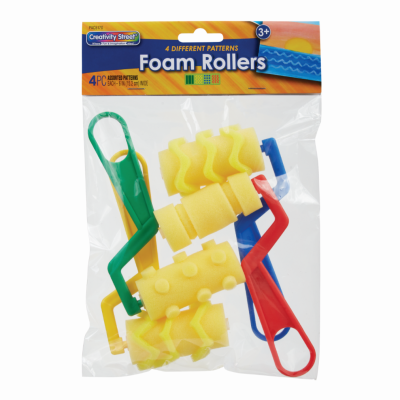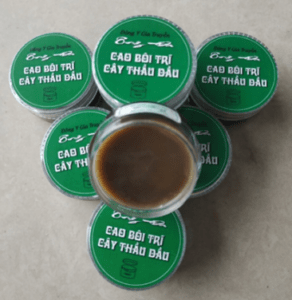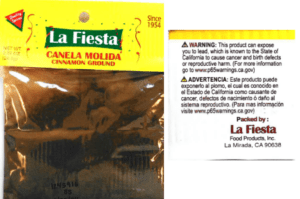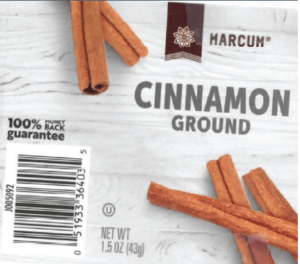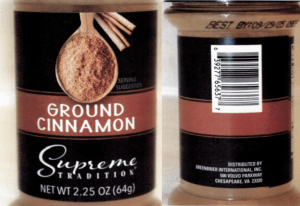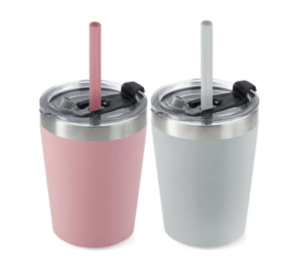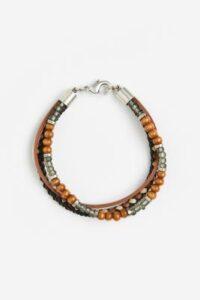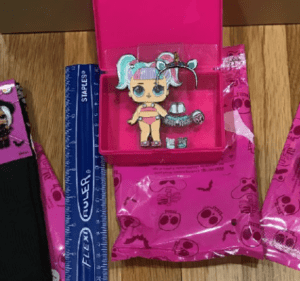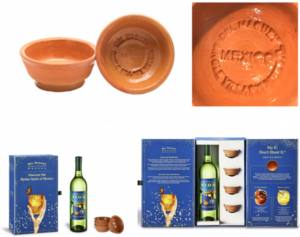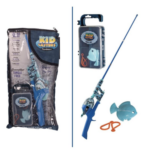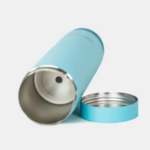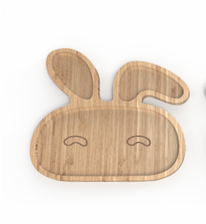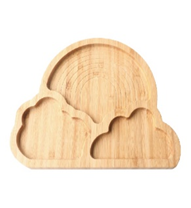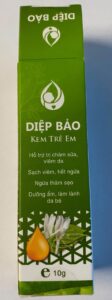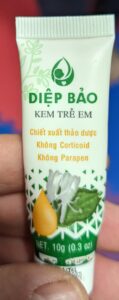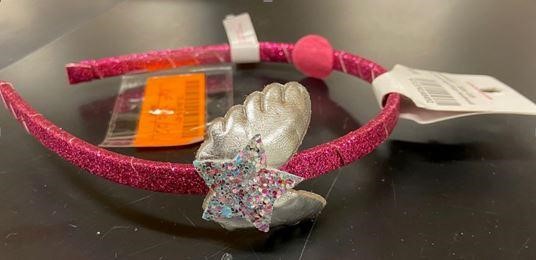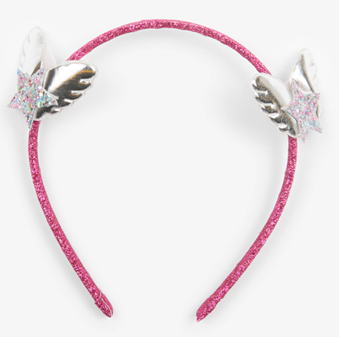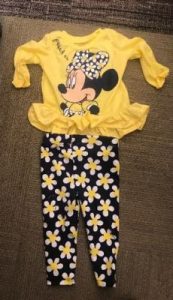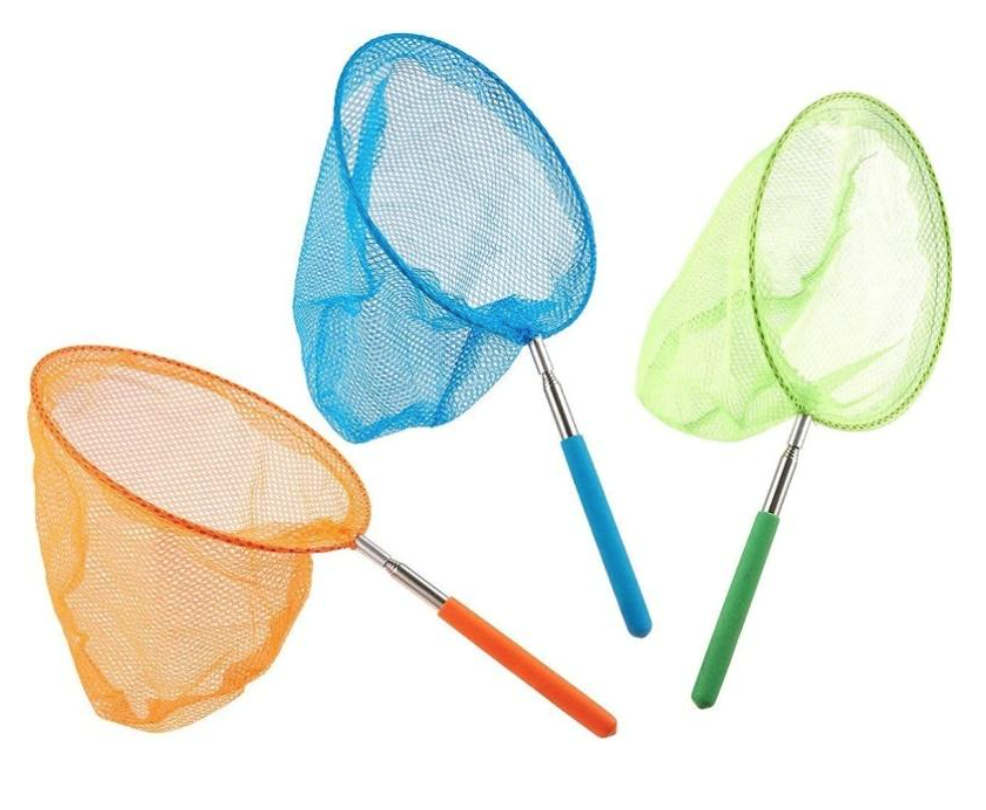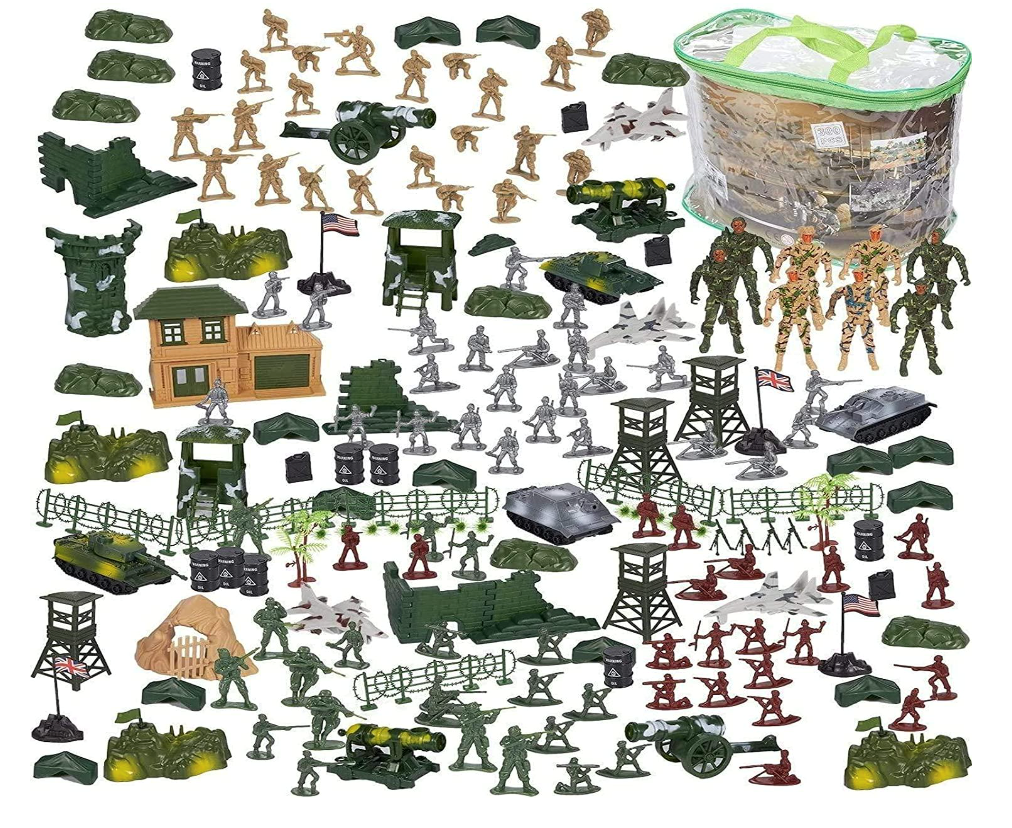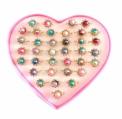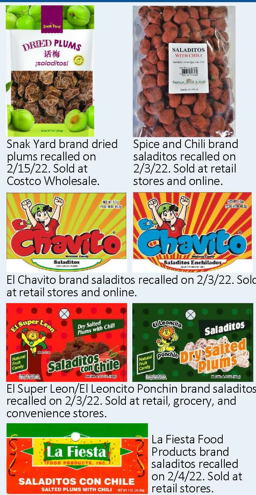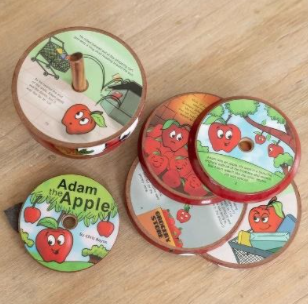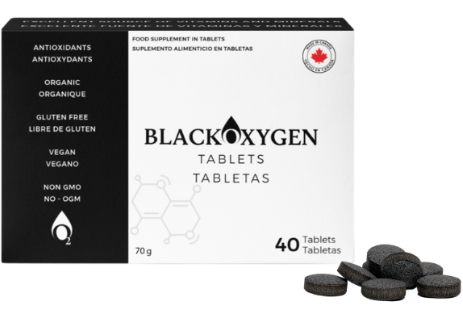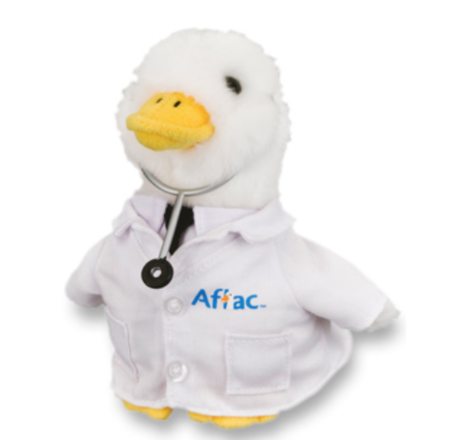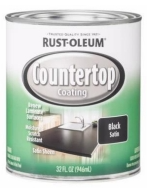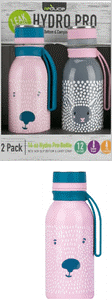Kern County Childhood Lead Poisoning Prevention Program
The Childhood Lead Poisoning Prevention Program is a Public Health Services program that seeks to eliminate childhood lead poisoning by caring for lead-poisoned children and identifying and eliminating sources of lead exposure. Our efforts are pursuant to California Health and Safety Code Sections 105275-105310 (Childhood Lead Poisoning Prevention Act of 1991).
To contact the Public Health Nurse/Childhood Lead Poisoning Prevention Program please call (661) 321-3000.
To file a tip or complaint regarding a lead hazard in our community, please fill out this form and email it to EH@kerncounty.com or bring it to 2700 M St, Suite 300, Bakersfield, CA 93301.
What's New?
- Product Recalls
- Dixon Ticonderoga Recalls Creativity Street Foam Pattern Rollers Due to Violation of Federal Lead Content Ban - May 2, 2024
- Fossil Group Recalls Bracelet Sold with Skechers Jewelry Gift Sets Due to High Levels of Lead and Cadmium - March 7, 2024
- FDA Alert Concerning Certain Cinnamon Products Due to Presence of Elevated Levels of Lead | FDA - March 6, 2024
- Sandford Family Croquet Sets Recalled Due to Violations of the Federal Lead Paint and Phthalates Bans; Sold Exclusively on Amazon by DOM Sports | CPSC.gov - February 29, 2024
- Yaomiao Children’s Rhinestone Silver Tiaras Recalled Due to Violation of Federal Lead Content Ban; Sold Exclusively on Amazon.com by LordRoadS - January 25, 2024
- PandaEar Recalls Stainless Steel Children’s Cups Due to Violation of Federal Lead Content Ban; Sold Exclusively on Amazon.com (Recall Alert) - November 22, 2023
- H&M Recalls Men’s Clasp Beaded Bracelets Due to Lead Poisoning Hazard; High Levels of Lead Content - September 21, 2023
- Soojimus Recalls CUPKIN Stainless Steel Children’s Cups Due to Violation of Federal Lead Content Ban (Recall Alert) - July 20, 2023
- Bunch Bikes Recalls The Preschool Electric Bicycles Due to Violation of the Federal Lead Paint Ban; Lead Poisoning Hazard (Recall Alert) - May 25, 2023
- CultureFly Recalls L.O.L. Surprise! Trick or Treat Subscription Boxes Sold with Metal Doll Pins Due to the Violation of the Federal Lead Paint Ban; Lead Poisoning Hazard (Recall Alert) - May 4, 2023
- Del Maguey Issues Voluntary Recall of Promotional Ceramicware Cups Called 'Copitas' Used for Drinking Mezcal Because of Possible Health Risk - May 1, 2023
- Lil Anglers Recalls Children's Fishing Rods Sold with Kid Casters No Tangle Combos Due to Violation of Federal Lead Content Ban - April 20, 2023
Childhood Lead Poisoning Prevention Program Services
The Kern County Childhood Lead Poisoning Prevention Program provides case management services for lead-exposed children of the county along with community and provider education and outreach. This strategy utilizes a wide range of resources to ensure optimal health care.
Public Health Nurse/Registered Environmental Health Specialists:
- Conduct home visits to children with very high blood lead levels.
- Complete a child/family assessment (physical, psychosocial, and environmental).
- Identify and test for possible lead sources such as pottery and home remedies.
- Provide health education, monitor lead levels, and encourage medical follow-up.
- Provide nutritional counseling and referrals for children with very high blood lead levels.
- Conduct environmental home inspections to children with very high blood lead levels.
- Identify and test for possible lead sources such as paint, soil, dust, and water.
- Provide recommendations to reduce contact with lead.
- Follow-up to see that sources of lead are corrected.
Health Education Staff:
- Provide information to families of children with moderately elevated blood lead levels regarding possible lead sources, nutrition, and blood lead testing recommendations.
- Provide health education through presentations and health fairs to the general public, medical providers, and community-based organizations.
- Work with families and healthcare providers.

Lead is a poison that is particularly dangerous for young children because of their small size and rapid growth and development. It can cause behavioral and learning difficulties, anemia, seizures, and other medical problems. A lead test is the only way to know if your child has lead poisoning.
Children should be tested at 12 months and 24 months of age. This requirement is a part of the Early and Periodic Screening, Diagnostic, and Treatment (EPSDT) schedules. Children from 3 to 6 years of age should have their blood tested if they have not been tested before and:
- Are Medi-Cal eligible.
- Live in or regularly visit a house built before 1978 with ongoing or recent renovations or remodeling.
- Have a sibling or playmate who has or has had lead poisoning.
Sources of Lead
Lead poisoning occurs when the body absorbs lead in large amounts by breathing in or swallowing substances that contain lead. It is seen after exposure to lead for months or years. Lead can be found throughout a child’s environment.
- Homes built before 1978 (when lead-based paints were banned) probably contain lead-based paint. When the paint peels and cracks, it makes lead dust. Children can be poisoned when they swallow or breathe in lead dust.
- Certain water pipes may contain lead.
- Lead can be found in some products such as toys and jewelry.
- Lead is sometimes in candies imported from other countries or traditional home remedies.
- Occupations involved working with lead-based products, such as auto repair, battery manufacturing, mining, painting, and welding may cause parents to bring lead into the home.
- Children who live near airports may be exposed to lead in air and soil from aviation gas.
- Soil
- Pottery
- Cosmetics
- Art supplies
- Lead bullets
Find the Lead Sources (ca.gov)
Encuentre las Fuentes de Plomo (ca.gov)
Frequently Asked Questions (ca.gov)
Prevention
Parents and caregivers can also prevent childhood lead poisoning by:
- Wiping clean or taking off shoes before entering the home
- Washing children’s hands and toys often
- If lead-based paint is on any surface inside or outside of the home, wet mop and wash surfaces often
- When painting or remodeling, always follow “lead-safe” work practices:
- Use plastic sheeting on the ground and furniture while working.
- Wet surfaces before sanding and scraping.
- Wet mop the area with an all-purpose cleaner at the end of the day
- If hiring workers, ensure they are properly certified (California Department of Public Health for abatement, United States Environmental Protection Agency for renovation)
Protect Your Child - English/Spanish (ca.gov)
Nutrition
Children with empty stomachs absorb more lead than children with full stomachs. Eating healthy foods can help keep children safe from lead. Serve children healthy meals and snacks at least every 3 – 4 hours including:
- Protein, such as lean meat, poultry, seafood, eggs, beans, peas, and unsalted nuts and seeds
- Vegetables, in a variety of colors like dark green, red, orange, yellow and purple
- Fruits, like fresh, frozen or canned fruits without added sugar.
- Whole grains, like whole-wheat bread, oatmeal, quinoa, and brown rice.
- Dairy products, such as milk, soymilk, nut milks, or yogurt without added sugar.
Limit foods with:
- Added sugar, like candy, soda, sugary breakfast cereal, sweet treats and granola bars.
- Added fat, like fried foods, fast foods, chips, pork rinds and other processed foods.
Make Healthier Choices (ca.gov) – English
Make Healthier Choices (ca.gov) – Spanish
For more information please visit: California Department of Public Health - Me and My Family
The Childhood Lead Poisoning Prevention Branch (CLPPB) has programs to ensure that workers in occupations involving lead are properly trained to perform their jobs safely and protect their families, clients, and themselves from lead exposure.
- California Department of Public Health - Lead Professionals
- California Department of Public Health - Public Health Workers
- Housing and Building Resource List
- Environmental Protection Agency (EPA – Lead Information)
Steps to Lead Safe Renovation, Repair and Painting
- Steps to Lead Safe Renovation, Repair and Painting (March 2021) (pdf) (EPA-740-K-11-001)
- Pasos para la renovación, reparación y pintura seguras con el plomo (marzo de 2021) (pdf) (EPA-740-K-11-001)
DANGER: Houses and apartments buildings built before 1978 may contain lead-based paint. Sanding, scraping, or otherwise disturbing lead paint can release large amounts of toxic lead dust. This dust, which may not be visible, can settle on floors and other surfaces where it gets on children’s hands and into their mouths.
Standard of Care on Screening for Childhood Lead Poisoning
State regulations impose specific responsibilities on doctors, nurse practitioners, and physician assistants doing periodic health care assessments on children between the ages of 6 months and 6 years. This is a brief summary of health care providers' responsibilities. These regulations apply to all physicians, nurse practitioners, and physician assistants, not just Medi-Cal or Child Health and Disability Prevention (CHDP) providers.
Health care providers who perform periodic health assessments for children are required to inform parents and guardians about:
- The risks and effects of childhood lead exposure.
- The requirement that children in Medi-Cal should be blood lead tested.
- The requirement that children not in Medi-Cal who are at high risk of lead exposure should also be blood lead tested.
For more in information click on the links below:
California Department of Public Health - Provider Information
CHDP Medical Providers - Bakersfield
The California Department of Public Health’s Childhood Lead Poisoning Prevention Branch has developed lead education materials in multiple languages for parents and families, health care provider offices, childcare providers, businesses and organizations, and others interested in preventing lead exposure in children. These materials can be downloaded and printed. To order free printed lead education materials, please contact your local Childhood Lead Poisoning Prevention Program @661-321-3000
- California Department of Public Health Lead Education Materials
- California Department of Public Health - Me and My Family
- Easy Ways to Protect Your Family from Lead Poisoning English & Spanish
- Home Remodeling Information English | Spanish
- CLPPB Folk Remedies English | Spanish | Punjabi
For the Latest Lead Recalls please refer to “U.S. Consumer Product Safety Commission” by visiting: www.CPSC.GOV or calling: 1-800-638-2772.

